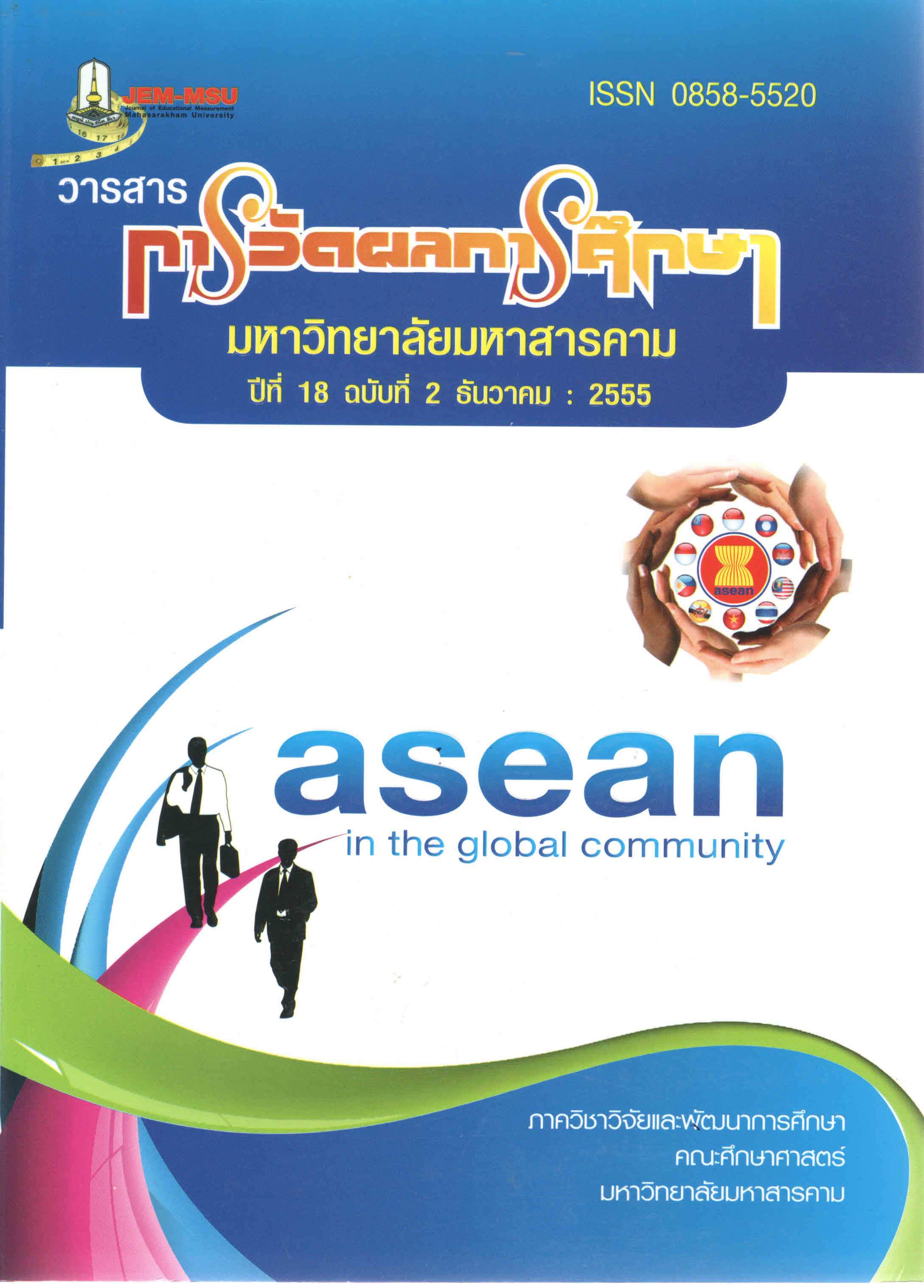The Causal Factors Affecting the Democracy Culture of Mathayomsuksa 5 Students under The Secondary Education Service Area Office 26 : Multi-level Analysis.
Main Article Content
Abstract
This study aimed 1) to develop and test the validity of the structural equation
model of multi – level factors influencing democracy culture, and 2) to estimate direct
inherence size and indirect influence of the variables in the structural equation model
of multi – level of democracy culture. The sample consisted of 960 Mathayomsuksa 5
student from 32 classrooms at 14 schools under the Secondary Education Service Area
Office 26 in the first semester of the academic tear 2012, obtained using the multistage
random sampling technique. The instruments used in the study were : (1) a scale on
democracy culture (2) a scale on democracy rearing (3) a scale on social skill (4) a scale
on mass media influence (5) a scale on peer – friend relationship (6) a scale on peer –
teacher relationship (7) a scale on learning process focused on the democratic (8)
a scale on democracy activity in school. The collected data were anlysed using
descriptive statistics, multiple correlation analysis, confirmatory factor analysis, multi –
level confirmatory factor analysis, and multi – level structural equation model analysis.
The results of the study could be summarized as follows :
1. The structural equation model of multi–level factors influencing
democracy culture of mathayomsuksa 5 students under the secondary education
service area office 26 was in harmonious congruence with the empirical data by
considering from the statistics used for checking the validity of the model : χ 2 =
1046.831 df = 387 CFI = 0.930 TLI = 0.903 RMSEA = 0.042 SRMRW = 0.017 SRMRB =
0.414 while χ 2/df = 2.705.
2. The result of estimating the values of the sizes of direct influences and
indirect influences of the variables in the structural equation model of multi – level of
democracy culture, were as follow :
2.1 At the student level or within group level, it was found that social
skill, influence mass media and peer–friend relationship had direct influences on
students’ democracy culture at the .01 level of significance with influence sizes of 0.674, 0.181, and–0.359 repectively. Democracy rearing had an indirect influence on
Students’ democracy culture through social skill and influence mass media at the .01
level of significance with the influence sizes of 0.192 and 0.068 respectively. And peer
– friend relationship had an indirect influence on Students’ democracy culture through
social skill at the .01 level of significance with the influence size of 0.449. In term of
predicting power, all of the predictive variables including democracy rearing, social skill,
influence mass media, and peer – friend relationship could cooperatively predict
student’s democracy culture at 23.30 percent.
2.2 At the classroom level or between groups level, it was found that
learning process focused on the democratic had a direct influence on classroom’
democracy culture at the .01 level of significance with influence size 0.862. However,
peer – teacher relationship had an indirect influence on classroom’ democracy culture
through learning process focused on the democratic at the .01 level of significance with
the influence size of 0.531. In term of predicting powers, all of the predictive variable
including peer – teacher relationship and learning process focused on the democratic
could cooperatively predict classroom’s democracy culture at 67.30 percent.
Article Details
The content and information contained in the published article in the Journal of Educational Measurement Mahasarakham University represent the opinions and responsibilities of the authors directly. The editorial board of the journal is not necessarily in agreement with or responsible for any of the content.
The articles, data, content, images, etc. that have been published in the Journal of Educational Measurement Mahasarakham University are copyrighted by the journal. If any individual or organization wishes to reproduce or perform any actions involving the entirety or any part of the content, they must obtain written permission from the Journal of Educational Measurement Mahasarakham University.


